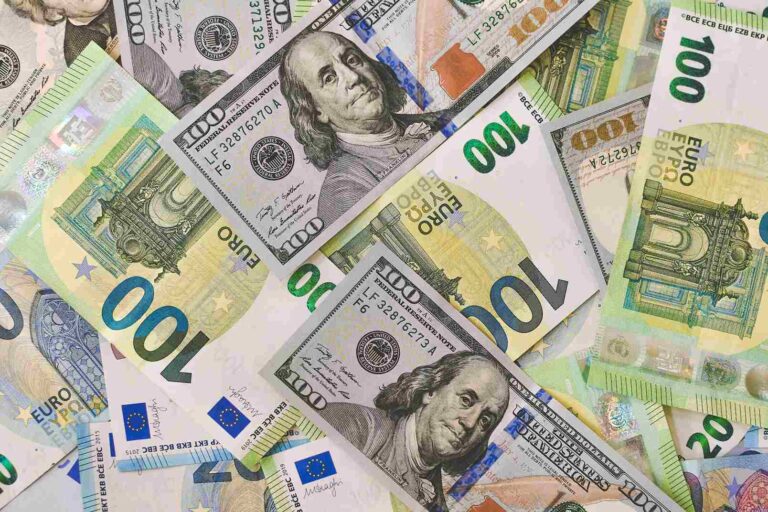Volatile currencies exist because the value of a currency can move up or down in response to a wide range of events on the foreign exchange market.
Some currencies have recently shown extreme volatility, which has presented both possibilities and risks for traders and investors.
Two of the most important pillars were the Russia–Ukraine War and the monetary policies that followed COVID–19. Many currency pairs were also influenced by the global recession and the fragmented nature of commodity prices.
This article will delve into the most volatile currencies of recent times, investigating the factors steering their volatility and the significance for global markets.
Table of Contents
The 5 most volatile currencies recently
The following are the most volatile currencies recently:
JPY (japanese yen)
The Japanese yen, formerly considered a safe haven currency, has seen significant swings in value in recent months. The unpredictability of the Japanese economy can be attributed to a number of factors. Thus including its performance, geopolitical concerns, and shifts in global risk appetite.
Since Japan is one of the world’s top exporters, the country’s currency is especially vulnerable to changes in international commerce.
The value of the yen is also strongly affected by the growth of the Japanese economy, inflation rates, and the Bank of Japan’s monetary policy actions. In order to profit from the yen’s volatility, traders keep a close eye on these variables.
EUR (Euro)
The European Currency Unit, or Euro, which is used by 19 countries in the European Union, has experienced significant fluctuations as of late.
The Euro saw widespread volatility against all of the majors. Several factors, including the European Central Bank’s (ECB’s) policy and rising energy prices, have contributed to this decision.
Aside from the European Central Bank’s monetary policy decisions, economic inequalities among member countries, and political uncertainties have all affected the value of the euro.
The GDP growth, inflation rates, and fiscal policies of the major Eurozone economies are all important economic factors that affect the volatility of the currency. In addition, elections, referendums, and talks over the future of the European Union can have a major effect on the stability of the euro.
GBP (British Pound Sterling)
The high volatility of the British pound can be attributed, in large part, to the uncertainty that has been caused by Brexit. The trade deals that were reached after the referendum. As well as the consequences of the discussions that followed, all had a significant impact on the value of the pound.
Additionally, the GDP growth, inflation rates, and interest rate decisions made by the Bank of England all have significant impacts on the currency’s volatility. To predict the Pound’s moves and exploit trading opportunities, investors keep a close eye on Brexit-related news, economic data releases, and political events.
AUD (Australian Dollar)
Because of its historical closeness to commodity prices, the Australian dollar is typically categorized as a “commodity currency”. And it has seen significant swings in value as of late.
The value of the Australian dollar is strongly influenced by factors. Such as the global demand for goods, especially from major economies like China.
Moreover, domestic economic factors such as interest rates, employment data, and inflation rates play a considerable role in the fluctuation of the currency. The value of the Australian dollar is affected by a number of factors. Including shifts in risk appetite and geopolitical tensions around the world.
USD (United States Dollar)
The United States dollar is widely recognized as the world’s major reserve currency. Although it has a reputation for being a safe haven in the currency market, even it is subject to fluctuations.
The fundamental factor that affects the value of a currency is the policy of the central bank. The Federal Reserve changed to a more hawkish stance in the United States from the unrestricted quantitative easing of the COVID-19 pandemic. The goal of each measure was to slow the rate of inflation. Inflation in the United States hit 9.1 percent in June 2022. A level not witnessed since the latter part of the 1970s. As a result of forex traders trying to factor in the policy of the Federal Reserve move, the USD became extremely volatile.
The Federal Reserve has started reducing the money supply by increasing interest rates and decreasing its balance sheet. The value of the dollar fluctuates in response to changes in interest rates, government spending, and other economic indicators. Such as GDP growth and inflation. Market sentiment toward the U.S. economy and geopolitical events also have a role in the economy’s erratic behavior.
Given the dollar’s prominence, changes in the value of the currency can have far-reaching effects on global trade and finance.
Volatile currencies, an evidence of the interdependence of global markets
Recently currency volatility is another evidence of the interdependence of global markets and the many factors that affect currency values.
The instability of these currencies is a result of a number of factors. Thus including economic indicators, geopolitical events, monetary policies, and swings in global mood. In order to spot opportunities and prepare for threats, traders and investors keep a close eye on these metrics.
Traders in the foreign exchange market would do well to familiarize themselves with the factors that contribute to currency volatility.
Read also: Inflation: the countries where it is currently highest in Europe












